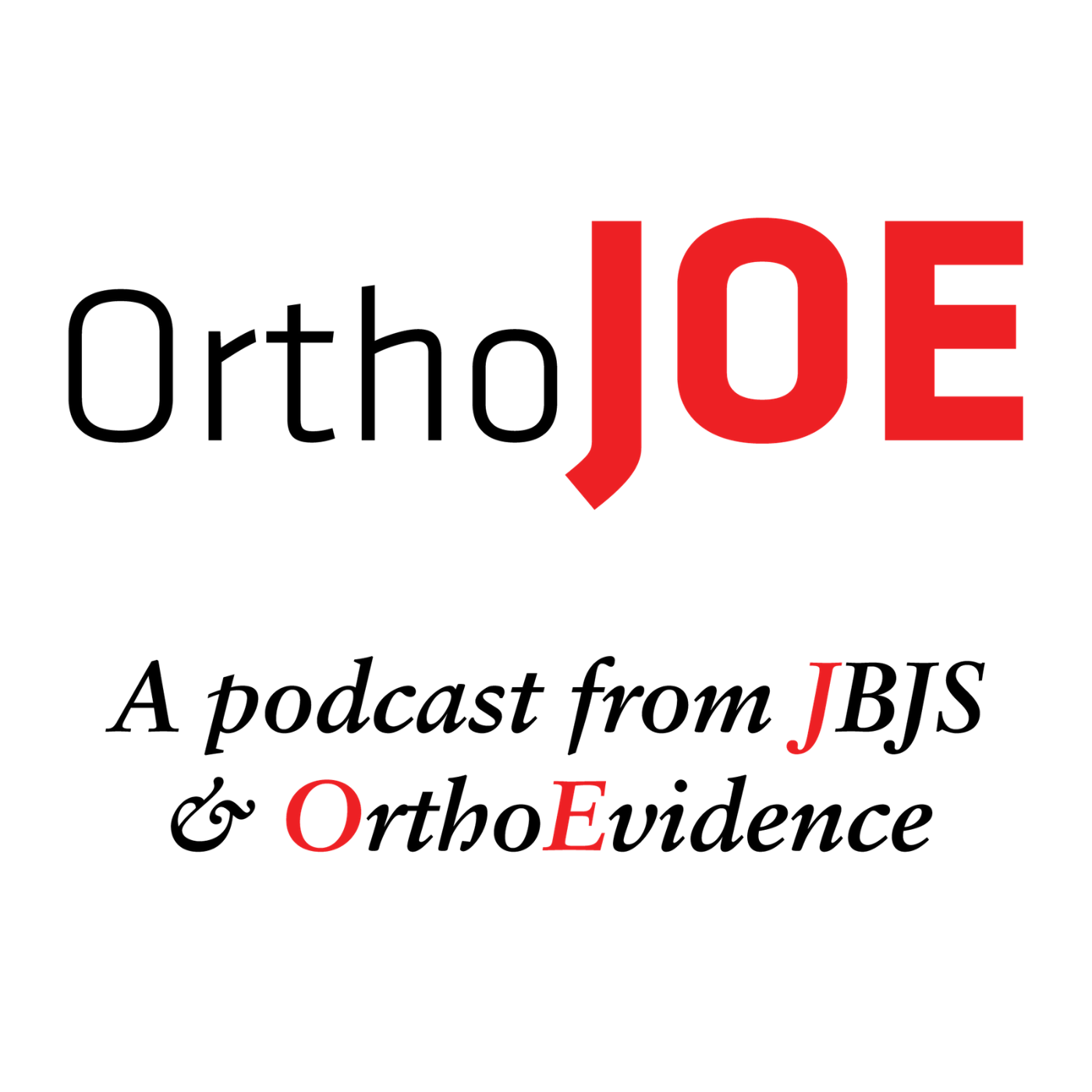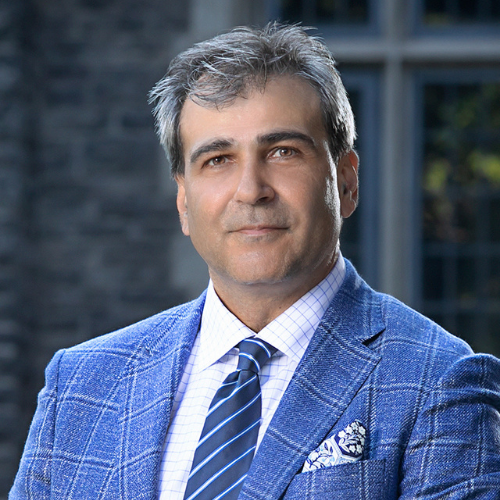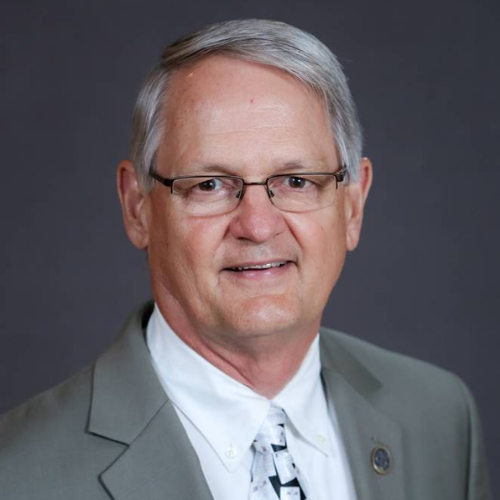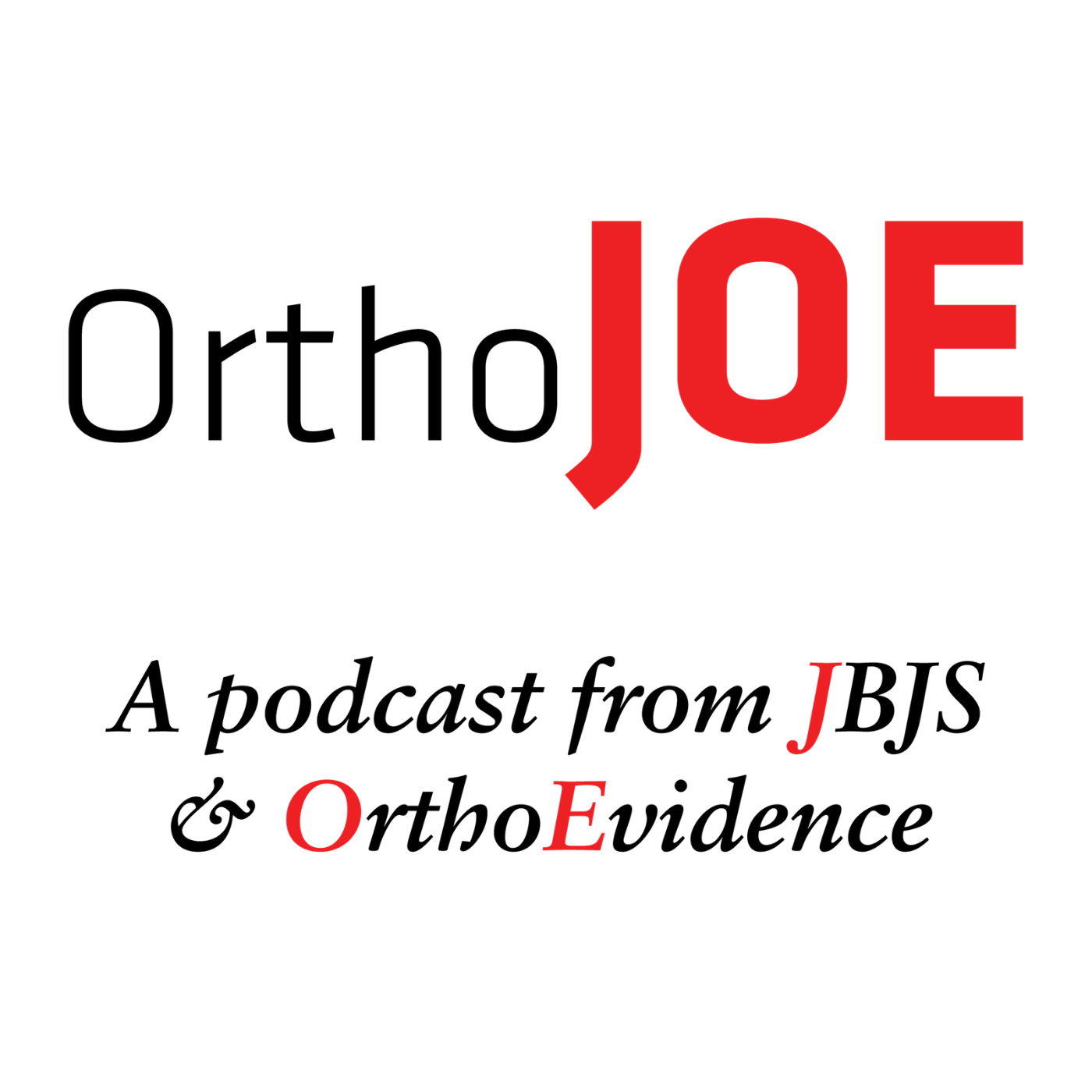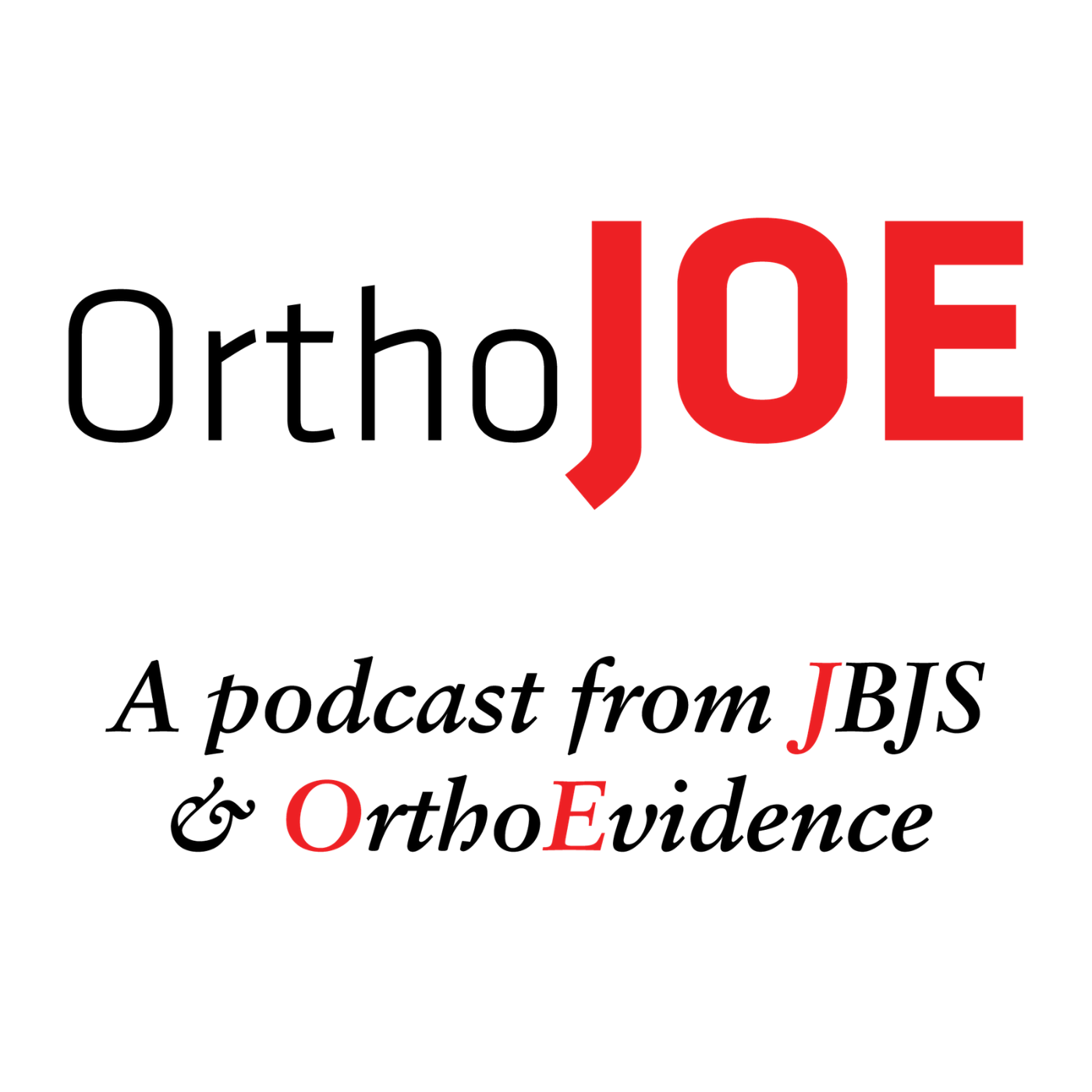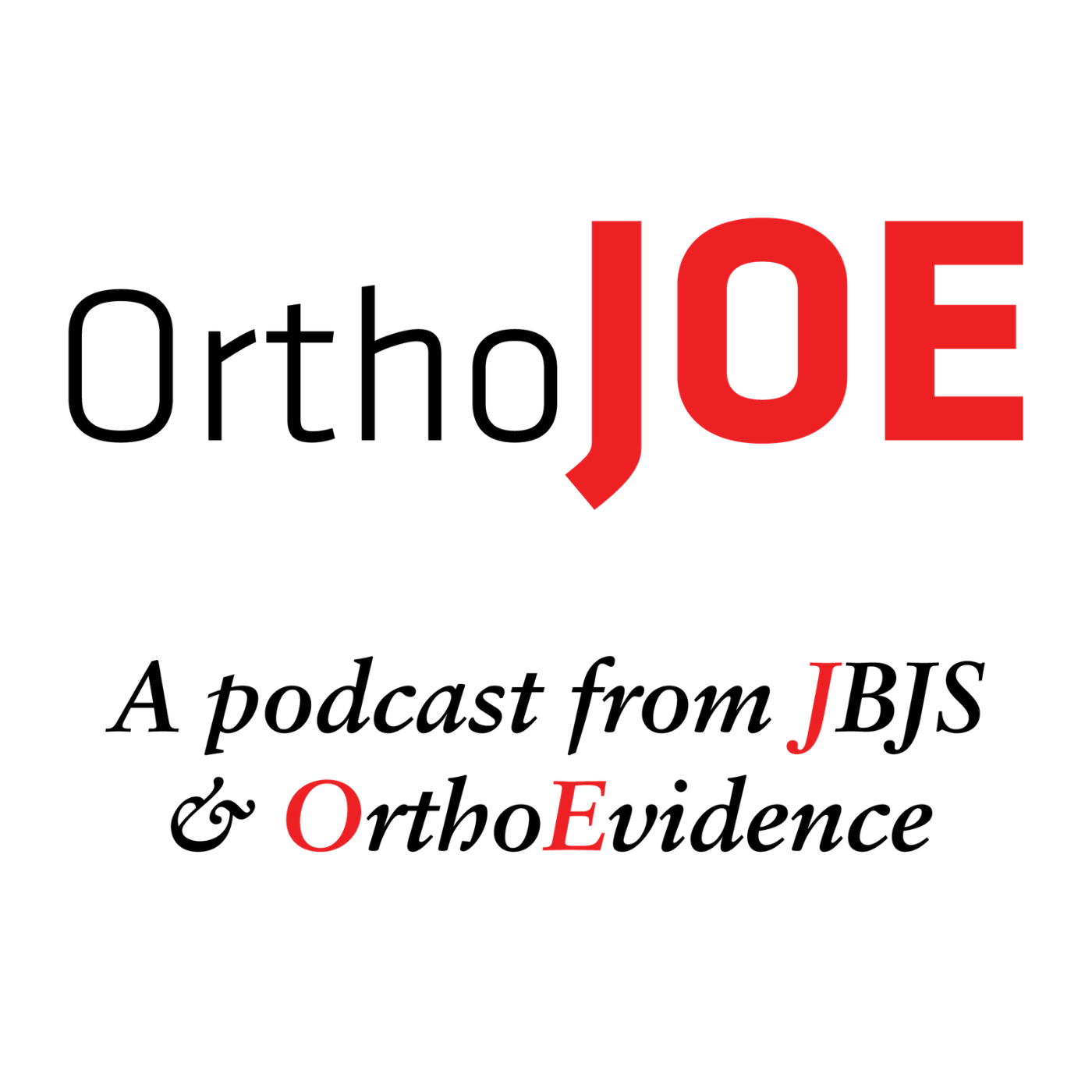Episode Transcript
[00:00:03] Speaker A: Welcome to JBJS Ortho Corps. Listen as members of the ortho community, residents, surgeons, educators, staff and patients share their stories about the experiences and people most important in their lives and the lessons they learned along the way. OrthoCorps is an audio archive inspired by StoryCorps and independently organized by the Journal of Bone and Joint Surgery.
[00:00:29] Speaker B: All right, so welcome to another edition of JBGs's Ortho Core.
I'm Sanjeev Sabarwal, and today I have the privilege of talking with my mentor and friend, Dr. Hugh Watts.
Hugh is a professor emeritus at UCLA and most recently worked at the Shriners in Los Angeles.
So good morning.
[00:00:52] Speaker A: Hugh, good morning to you. And I'm glad to be here with you chatting.
[00:00:56] Speaker C: Great.
[00:00:57] Speaker B: Okay, so, Hugh, you've been the past president of pozna. You've served as a historian for that society, and you also founded the POZNA Committee for Outreach in Underserved Regions, you know, just to name a few of your contributions to posna.
So tell us a little bit and, you know, put on your historian hat and maybe tell us how POZNA evolved and how you see the practice of pediatric orthopedic changing from the time you started training to when you sort of, you know, slow down in terms of clinical practice.
[00:01:35] Speaker A: Slow down.
Anyway, that, you know, originally the pos, the Pediatric Orthopedic Society was a very exclusive group of people.
And I was a tweener. I was in between, and that I was probably just about the.
The last of the. Of the group of POs before it made its major changes.
And I was at an academy meeting and they had a sub group where they were talking about the history of orthopedics. And they had various people talking.
Among them was Robert Salter, Bob Salter from Toronto.
And he was asked to speak about pediatric orthopedics. And his history of pediatric orthopedics was interested, but I thought it totally missed what I felt was the really essence of the changes that had been going on.
He spoke of various interests in different people, and he used publications as the source.
I had been involved in the changes, and in part, I was the secretary for the POS before it had its amalgamation with the posg.
[00:03:08] Speaker B: And I'm sorry, POSG for our listeners, is the Pediatric Orthopedic Study Group.
[00:03:13] Speaker A: Right.
[00:03:15] Speaker B: And the pos, the Pediatric Orthopedic Society, was more of a very exclusive, you know, in by invitation only kind of group. Is that right?
[00:03:25] Speaker A: That's right. Okay. And. And their. Their downfall, really, that made it so difficult at first was that they decided that they would only allow one person from each major orthopedic center.
Major or pediatric orthopedic center to be a member.
And so that meant that somebody like Peterson would be probably forever excluded because you're talking about.
[00:03:56] Speaker B: I'm sorry, you're talking about Ham Peterson at Mayo.
[00:03:59] Speaker A: Okay, got it.
That Ham would have been waiting around for Tony Bianco to die.
And I think it turned out that he would have had to wait 20, 30 years, which would have been ridiculous. And so the idea of only having one member from each center was. Was originally. Was sort of set up so that no one center would dominate the whole bunch of groups. But now then.
I've now lost my train as to where we were.
[00:04:38] Speaker B: Just to summarize, you know, how did POSNA happen? It sounded. Sounds like pos. And the study group kind of came together. So tell us. Tell us how. How that happened.
[00:04:49] Speaker A: Yeah, well, so initially, the POs, they. They were the tried and true, and they really were a distinguished group. In 1969, there were only nine pediatric orthopedic surgeons in the US and Canada that exclusively treated children.
And so that's when people decided to maybe they ought to get together and talk to each other. But then when they looked around, they found another function. So by the time the group got together and formalized the Pediatric Orthopedic Society, there were some 21 people who were.
And they were indeed the leaders at the time. But it was this exclusiveness that I was mentioning that made a real problem for the younger ones. And the younger ones then just got together a very informal group which became known as the Pediatric Orthopedic Study Group.
And primarily that was Ann Peterson and.
[00:06:06] Speaker B: Yeah.
Was it Henry Cowell?
[00:06:10] Speaker A: Henry, thank you.
[00:06:11] Speaker B: Yeah, yeah, yeah, yeah.
[00:06:12] Speaker A: This may be a problem with trying to remember some details.
Anyway, and so Henry and. And Ham were instrumental in. In forming what they basically sort of thought of themselves as the young Kirks. That.
And that the. The old folks didn't.
All these young parts who really wouldn't have the expertise and knowledge that they had.
And in some respects, the younger people were a little bit in awe of the olders and were a little afraid. It was a little hard to speak up what you thought about Leg Perthes disease when you had Bob Salter right there looking over your shoulder, who made so many contributions to that disease and so forth. So that the.
This was the initial conflict. But then as time went on, there was more and more amalgamation of the two groups because the POSG more or less became a farm club of the POS and there's no doubt that POS had the prestige.
So that if you were a POS member and they invited you to be a member of the POS rather than POSG you would jump at the chance because this was acknowledging you're welcome into the central core of people that.
So that as the. These groups started, mingled together, Bob Winter was very instrumental initially in pushing to join the group.
And this was sort of moles smoldering, I should say, until the early 73, 74.
And then it sort of finally dawned on people that they, you know, they couldn't get. They couldn't get funding to go to two meetings a year. And there was also taking more time and all of the rest. So that the natural thing happened that they came together.
And at the final coming together.
[00:08:50] Speaker B: That.
[00:08:50] Speaker A: Was at that point, I was the secretary of POS and John hall was the president, and we were at the same hospital. And therefore that made it a lot easier and it was easier kind of push the people into getting together.
And so when this finally did happen, it was decided that we would amalgamate them and they would be called the Pediatric Orthopedic Society, which would have been very good.
But unfortunately, as the lawyers looked into things, that many of the leadership of POS had not been very good about fulfilling their duties to fill in papers for. For the irs.
And they, the leadership of IR pos excuse me, of POS suddenly found that they were liable for potential problems of.
Of considerable amount of money. And so they decided the answer was to disband and reform themselves immediately as a new organization, which was called posna, Pediatric Orthopedic Society of North America.
Of course, North America didn't include anything south of the southern border of the US and unfortunately, you know, prep my preference because I have a general worldview of, you know, getting together.
It was a shame that that was the choice. Yeah. Because the goal of POSNA or POS was really to be representative of pediatric orthopedic surgery in the world, not of North America.
But that was an accident of bureaucracy and we were stuck with it.
Other parts of amalgamation, which I criticized, but no one paid attention to me, was that the emblem that they chose was two crooked trees with one state to correct it instead of two stakes to use conjointly for its increased power to correct the one crooked tree in the middle.
[00:11:28] Speaker B: Got it.
[00:11:28] Speaker A: So we had twice the pathology and. And only one organization. But anyway, that's neither here nor there. Yeah.
[00:11:38] Speaker B: Okay. Well, this is great. I mean, to hear the backstory, you know, from someone like you who was, you know, very intimately involved in the whole thing. And, you know, there's so much serendipity there. But let's move on to a related theme.
You know, I think, interestingly, Pozna came at a time when orthopedic surgery and pediatric orthopedic surgery was also changing.
You witnessed both sides of this sort of change or chiasm. So tell us, how do you think that took off? How did the clinical practice of pediatric orthopedics that you saw evolved over time?
[00:12:20] Speaker A: The time I spent as a resident was in the old style of pediatric orthopedics. And there.
There really wasn't a history of the safety of using internal fixation in children.
That is, if you put a screw into a hip, you know, these children would be living for another 50, 60 years with that screw in them. And we know what the dangers were.
And so there was a much greater reliance on either the external fixation or that you use plaster.
And so that as a resident, for example, I spent three months as the plaster pop, as we were called, and three months entirely treating children with plaster. And so I.
[00:13:19] Speaker B: And I'm sorry, this is for, like, patients with scoliosis or fractures, for everything, you know that.
[00:13:26] Speaker A: I mean, scoliosis, it's a subject, Dear my heart, how that was managed when I was a resident, you know, a child came in with scoliosis that was going to be operated upon.
And the first step, because you, as the plaster pup, had the job of making a body jacket for this child. The body jacket was first meant that you sewed on a sort of a half inch thick felt coat, quite literally, where, you know, tailor it all with tucks and bits and pieces to. So it was nice and smooth. And this then was coated.
Imposter. Yeah. Okay, so then what you did as you waited about two days until it was good and hard, and then you kind of guessed where the apex of the curve was, and you put a thumb back in the front of the cast and thumbtack in the back of the cast, sent that child off to X ray or get an X ray to confirm that your thumbtack was in the right position, that you cut the. From the thumbtack on the concave side around to the other thumbtack all the way through the plaster, and then cut through all the felt. And then on the convex side, you cut out a pie wedge, which created a gap. Oh, I forgot to mention it. Then you you plastered in a hinge on top of the cast and on the back of the cast. And then you had to put a.
Two little right angle steel things onto the concave side, and which you put a turnbuckle. Yeah. And then twice a day, you went to the patients, or actually the patients came to the test room, and you turned that turnbuckle up a couple of turns, and you gradually cranked the child's scoliosis as straight as you could make it over a couple of weeks.
And then when that had happened, that was actually the correction. Yeah. You didn't do any correction surgically. Yeah. That was the surgery. The correction was entirely in the cast. Yeah. Then you took the cast off.
You had to wait a couple of days to let the skin get nice and cleaned up for the surgery. Then you took the surgery. And then there were two teams. The team of the spine open up the spine from Guzzle Disaster. They would. They would actually only then decorticate the posterior elements.
[00:16:13] Speaker C: And we.
[00:16:14] Speaker A: We did not cut out the. The facet joints. Yes. And then in the meantime, you, as the pup, had the privilege of taking a osteoperiosteal graft from the tibia.
[00:16:29] Speaker B: Huh.
[00:16:30] Speaker A: And you were operating simultaneously with the knee bent 90 degrees.
[00:16:34] Speaker B: Oh, so the patient is prone. Patient's prone.
[00:16:37] Speaker A: Patient is prone. Right. Yeah.
[00:16:39] Speaker B: Got it.
[00:16:39] Speaker A: Okay. Then. Then you cut out a piece of graft that went from the very proximal tibia to the very distal, avoiding the growth dice. And it was a centimeter and a half wide, and it was just. It was about a millimeter of cortical graft.
[00:16:59] Speaker B: Yeah.
[00:16:59] Speaker A: Which was left intact on the periosteum.
Then you close this up, and hopefully you had this graft and it was one piece.
Was.
And it had to be one piece. And that your skills were judged on on the basis of this.
A junior orthopedic resident. So you. That was a stressful time. Yeah. Then this was handed to the surgeon in the operating end, and then the spinal end, who would take a tall clip and cut a hole in the one end of this very osteo graft, put in a suture, and he would sew this graft into the uppermost spinous process left behind.
And then this graft was laid down in its bed. So you had an N for N total graft.
[00:17:54] Speaker B: So your extent of fusion. Your extent of fusion was based on the length of the tibia and the graft you took. Is that true?
[00:18:01] Speaker A: Yes, basically.
[00:18:03] Speaker B: Wow.
[00:18:04] Speaker A: And then you closed them all up and you waited a couple days. So Know that the child was doing all right and was able to eat and all the rest. And then you, as the plaster pup, had the job to put them into a new body jacket.
Body cast on this. This cast included not only the trunk, but included the arm on the convex side and the.
[00:18:33] Speaker C: The.
[00:18:34] Speaker A: The leg to the knee on the concave side.
And that you then put on. Put them again in the prolonged hinges. And, you know, have located the hinges by clips by the thumbtacks. And then you took the, oh, two or three days, very short time to regain all of the bin that you had created before the operation.
[00:19:02] Speaker C: Yeah.
[00:19:02] Speaker B: Okay, that's huge. But tell me. So there was no orthodist. Sounds like a lot of this.
[00:19:09] Speaker A: We can get there.
Okay, so now you've got this. And the child is. Now got a bend in the cast, which she is going to. She usually was going to spend six months in bed lying down.
[00:19:26] Speaker B: Huh.
[00:19:27] Speaker A: Okay. And so she would get little prism glasses so she could read, and she would go home wearing this cast for six months. Yeah. So six months later, she'd come into the hospital and you, as the pastor pup, would see her again, and you'd cut off the.
The cast. Yeah. And it was your job then to make a plaster model.
And so you would stand this girl up, who hadn't been standing for six months, and she was pretty weak and wobbly, and she would be held up with a chin next, you know, a jaw, an occiput strap, at which point you, as a plaster book, would then now put on a new but unlined. Well, there was a stock in there, but no felt plaster jacket, which then went from iliac. Just below the iliac crest to the upper thorax. Yeah. And when this set up, which was a, you know, not that many minutes later, you would cut that off.
The child would be then put back into bed and that mold was sent to the orthodist.
Got it. Who then filled up the mold, which then provided you with a solid plaster.
Yeah. That.
With a steel pipe going through it. Now, you, as a. As the orthopedic resident. Yeah. Were responsible to modify that mold so that it was, you know, you would have to carve a little off the prominences and pad in where concavities were. Yeah. So that the.
The new shape was somewhat corrective. Wow. And then you had. You worked out in the dungeon. I mean, it was a. Yeah.
You know, a room not much bigger than a closet. And there was a vise. And you put this mold steel central thing, and you took it took Two handled scrapers and modeled this whole thing around. And when it was a satisfactory shape, you then used elastic, which was a sort of plastic. You then dipped that into acetone, and this ocean would have died if it knew.
And you then made a plastics jacket out of this mold, and then you turned that over to the orthotists, who then put buckles on the front. Yeah. With sliding bars that would keep the. The sides of the.
Of this brace from sliding north and south.
And so then you saw the patient and a couple weeks later in the.
In the outpatient department, and this girl had to wear that thing for another six months.
And, you know, this was. This was treating. This was surgically treating. Yeah. A child with scoliosis. Yeah. And the difference was that, you know, it was just about that time, as I was finishing up my residency, that Harrington had been working on his rod. That was finally being accepted. Yeah. But the whole idea was, goodness, you couldn't leave metal in the job, you know, zillion years.
[00:23:23] Speaker B: Yeah.
[00:23:24] Speaker A: And so you, as a resident certainly became very, very close to the patient. Yeah. You've had a lot of dealings with the patient and that.
This is the part about orthopedics with children's orthopedics, which has changed so much.
But it was very, very different from general orthopedics at the time. Yeah. And that treating of a dislocated hip, you know, there are no pavlic stirrups.
You put them into a body cast and incorporated their.
Their legs into abduction and sunflexion. Yeah.
Not as much flexion as sort of went into the public stirrup, etc. But anyway. And these. These children wear these casts for six months. Yeah.
They'd have to be changed if the child. If you're getting a child young enough that the growth demanded. Yeah. And the interesting thing was that the parents would tolerate this. I mean, they weren't sort of given opportunity. I know this was the way you had to be treated. Yeah. And that.
I don't think current orthopedic surgeons who are in the pediatric world really recognize, you know, how much plaster was used. Oh, yeah. In those days.
And for children with cerebral palsy, they all. Regardless of any surgery they had, they all wore night casts. We would have to put on casts that were then treated by the cast technicians to, you know, with. Line with. Coated with Celestex to make them more permanent and so forth. And that was a whole world that made.
Made the world of orthotics much, much harder. I think you understood much better what the needs were of.
[00:25:38] Speaker C: Making.
[00:25:40] Speaker A: Making orthoses for children.
And this was, I think, helped me certainly in the early development of the Boston brace. Yeah.
Which I was very much involved in because I, you know, I had done.
I'd had to carve these models.
[00:26:00] Speaker B: Yeah.
[00:26:00] Speaker A: And I had to work at all of this. And that it was natural to be very, very cognizant of what the authors had to do.
And I think it helped a great deal anyway. That. That's a whole lot of area that's of interest. Yeah. No, no, I don't. I don't know that.
I don't think that a person who now treats a child surgically for scoliosis.
[00:26:32] Speaker C: Yeah.
[00:26:32] Speaker A: Where the child goes in and, you know, has everything all done right there. The. The.
The exposure was much more extensive. Yeah. Much more bone removed.
And that then the correction was the rod that you used right then and there. And then a couple weeks later, they're all walking and it's just a different world entirely.
[00:27:01] Speaker B: Yeah, it's definitely different, and I guess in most people's eyes, better. But I think there's something to be said with the personal experience and growth you had as a trainee.
[00:27:13] Speaker A: So I think so.
I mean, it's much, much better for a child now. Yeah. And hugely better for parent and.
And so on. But I think as a trainee. Yeah. I fully appreciated the.
The experience that I had, and I. I feel that, you know, it's something that current trainees are missing. Yeah. Which is the same, of course, getting us into a topic that both you and I are familiar with and dear to our hearts, which is polio. Yeah. I mean, you know, when I was wrestling at that time, the.
The polio was.
Was more or less controlled in the US because of the vaccine, but there were huge numbers of children who had been.
Who had suffered from polio, but who then were still dealing with the consequences. Yeah. And so that we would have three scoliosis, three polio clinics a week in the outpatient with a couple hundred children each. Wow.
And so. And that at the end, with the bracing of it, you know, with a child who would be in a kafo, which we used to call long leg brace, you learned that the angle of the ankle controlled the hip. So that if a child had weak gluteus maximus, you needed to extend the hip enough to get the center of gravity behind the hips or collapse and weight bearing. Yeah. Which meant that you had to dorsiflex the ankle. Well, it was our job with.
With bending irons, where we would adjust the hang the stops on the ankle. Yeah. To gain the amount of dorsiflexion, which would give you the hip extension that you needed for that.
And so this, you didn't send them to the Orthodox. You send them to.
And the word orthopress didn't exist then. He was the braceman. Yeah, you sent him to the brace shop later. But at the time we were residents. We did that ourselves. Yeah, yeah. So that, you know, this, this gave you much better appreciation of biomechanics and of the management of, of children. So that, and by the time you and I went off to Tajikistan, which was what, 2012, was it? Yeah, I think that's right. And that, you know, it was an epidemic for those who were listening, it was almost a thousand children. Yeah. Developed polio. And I think most of the world totally ignored it. And I think it was enough of embarrassment for the country that they didn't, they didn't advertise it. And so you had a huge group of kids with polio fresh, but there was almost nobody who had any experience in the treating of this. Yeah. So it felt as though it was certainly a natural and easy thing for.
My wife is a pediatric physical therapist and she had had a lot of experience with polio herself. And so when we went to Tajikistan, you know, to assess the situation, it was like old home week.
[00:31:04] Speaker C: But.
[00:31:07] Speaker A: I think for most, most pediatric orthopedic surgeons now, they may not have ever seen or managed a child with the long run consequences of polio.
[00:31:21] Speaker B: Yeah, you know, I mean you, of course, you and Sharon and some of us, you know, compiled this book on polio with global help and Lyn Staley's, you know, support. So I think that's a good, great resource to archive because isn't like the polio like diseases coming back even in the US and isn't it relevant for trainees today?
[00:31:46] Speaker A: Well, I think there are two things, you know, polio in the U.S. people think that vaccinations, you know, it cured polio or got rid of it. Well, it didn't at all. It just controlled it. And that even today, you know, when you do analyses of, of effluent from the, from the, the toilets of New York or even, as you know, in the last few years that there, there's polio still in the, in the sewage. Yeah, polio is everywhere and it's, it's not causing its bad problems because of vaccination certainly, but it's, I think to think that it's going to go away is, is, you know, since 85, was it 85 that the world health organizations set out to get rid of polio, which was hubris at its maximum. And you know, they here it is 35 years later and it's still there. And anytime war or anytime, you know, there's economic downturn where children in countries don't get vaccinated, that polio springs right back up again.
And then as you say, the variants which are unrelated, which give paralysis, that are all similar to what we used to see following polio, that these are sort of met with confusion really on the part of most pediatric orthopedics these days because it's a group of kids that they have not treated before. Yeah, right.
[00:33:53] Speaker B: I would love to keep talking, but I think time's gonna run out soon. So why don't, I mean, you know, you have such a rich experience and. Thanks for sharing all this. Just a final thought or two on, you know, you've had a global perspective, I think, I mean, you know, you were born in Japan, you know, you sort of took the scenic route. You, I think after medical school you went to Afghanistan for a couple of years. Then you did immunology in England after residency and of course all these overseas trips. So tell us, like if a trainee both here in North America and rest of the world was listening and you wanted to give them like a couple of sound bites of advice based on your experience, what are the do's and don'ts for a trainee and a young surgeon going taking care of pediatric orthopedics?
[00:34:46] Speaker A: You know, that's almost an impossible task because I mean, there are two problems. One is that you want to go over and you want help other people.
[00:35:02] Speaker C: And yet you have to realize that you can only really make a significance if you can leave something that's sustainable. Yeah. So the mere fact of just going over and doing things I think is maybe self satisfying and you feels good to pat yourself on the back. But that doesn't really do anything if teaching isn't a major part of your goal. And the problem is in order to teach, you need to be skilled enough to have something to offer.
[00:35:37] Speaker A: Yeah.
[00:35:38] Speaker C: So that while I went right after my internship to Afghanistan, I was there, this was 61, 62 this and I had a lot to offer because my just general training was better than what the locals medical people had.
[00:36:06] Speaker A: But in order to really make an.
[00:36:08] Speaker C: Impact, I would have to come back and get trained.
So one thing though is that you don't want to coming out and getting trained for this. You have two choices and you can get trained so that you can go back and do anything. Yeah. In which case people feel, gosh, I better take cardiac surgery and be able to, you know, do anything like that just in case I'm. I'm the one person that's there. But some basic good skills are what you want to teach. But you, you know, the problem is, is your family depends on your. Your wife. My first child was born in Afghanistan.
[00:36:55] Speaker A: And she was a year and a half when she left.
[00:37:00] Speaker C: But usually it's a great time to go with children because they have a lot to learn and it gives them a sense of their role in the world rather than just in their little community.
But, you know, there comes a point then when, you know, when they're six or eight, you don't want to have to send them off to private school schools or boarding schools.
So that's a little difficult. So they usually. You end up being on this side of the, of the divide and you can spend a couple weeks here and a couple weeks there each year. But. And that's how I then later spent much of my time.
[00:37:51] Speaker A: And I think that is useful. But the important thing is that you work. Know, it's not you're doing, it's what you leave behind.
It's sustainability.
Yeah. And that I just couldn't, you know, emphasize that enough and that, you know, it may. When you're going over to stick an arthroscope in your pocket because you know there's next to one of them around, doesn't do much good when the bulb is broken and. Or as you. As in a lot of places you go to, there's just no consistent electricity that you're going to be able to use to light up the bulb. Even if you add a supplier. Yeah. So that you have to choose your.
The technology that you are going to offer to something which is meaningful for them and that.
That it's something that they can grow with. Yeah. But you know, bringing high technical stuff isn't. Even though that's what they want. Yeah. Because, you know, that makes them feel good. And the pediatric or the surgeon overseas would love to be able to stick in a rod and fix his scoliosis and wow everybody. But you need people to follow them up. You need technology to do it safely so that you have to be very cautious about the technology you want to transfer. Okay.
[00:39:30] Speaker B: Very good. Good, good words to live by. And thank you so much, Hugh. This has been such a pleasure and an honor.
[00:39:37] Speaker A: You've been my pleasure.
[00:39:38] Speaker B: You've been my lifelong friend. Friend, mentor, philosopher, guide, everything.
So thank. Thank you for spending the time. And say my hello to Sharon, and we'll talk later. Thank you.
[00:39:53] Speaker A: Okay. Thank you, Sam.
